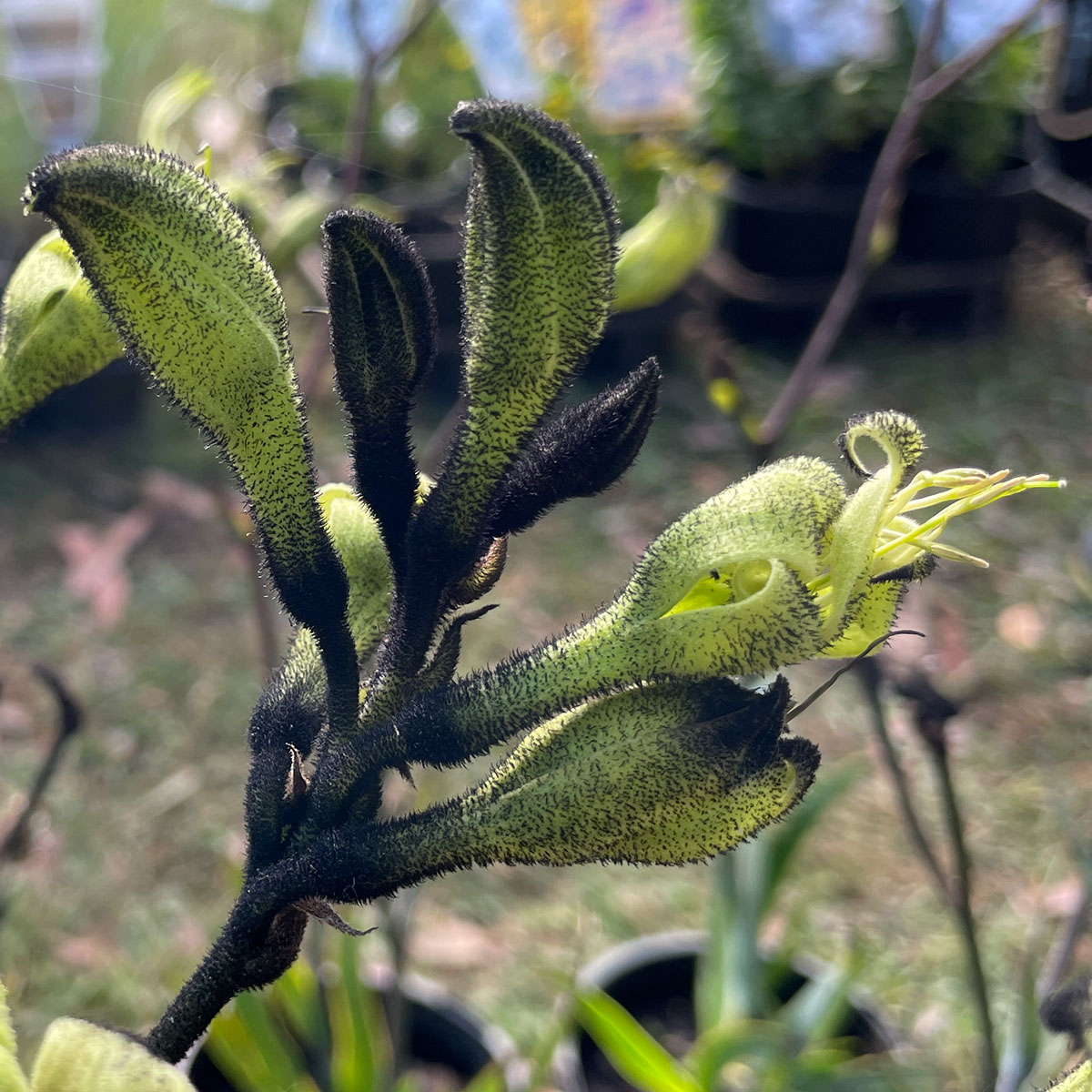Black Kangaroo Paw
Rare and unusual, the Black Kangaroo Paw (Macropidia fuliginosa) does look like a Anigozanthos species however it is different.

This is an evergreen clump forming perennial with blue-green strap or sword-like leaves up to 50 cm tall and flowers on stems up to 1m .
It is a rarity in that it has black green and yellowish as a colour scheme. For an Australian plant this is unusual. It is also a little difficult to grow, it requires exceptionally well drained soil, and good sun.
It is the new flower buds that are black, furry in feeling and opening to a pale green flower which contrasts well against the black.
Flowering is from winter into late summer and the foliage emerges as fan shaped, strappy leaves with the flowers appearing well above the foliage on long wire stems.
Although closely related to Anigozanthos, Macropedia is a different species and is more difficult to grow in the home garden than other ‘Kangaroo Paws’.
Found naturally in near coastal areas of Western Australia north of Perth, the ‘Black Kangaroo Paw’ require a very well drained soil and does not do well in humid conditions.
Care
You can grow this fascinating plant in a rock garden, a container with a very free draining potting mix or in the garden.
Poor drainage which quickly leads to root rot can be a problem. Heavy frosts and long cold winters are also not suitable.
This is a plant that does not like humidity, so good air flow is important.
How to Grow Black Kangaroo Paw Plants
We suggest growing the Black Kangaroo Paw in a 30 cm (12 inch) pot, or a very well drained soil.
A position in full sun is important.
- Use a good quality free draining potting mix.
- A little slow release native plant fertiliser mixed in can be beneficial.
- Plant and water in.
- Mulch around the plant gravel.
- Only water when the soil drys a little.
Water the soil not the foliage, and do not over water. Full sun, protection from frost, try to keep dry in winter, a position on a sunny the patio could be ideal. Well worth a try as they are spectacular.
Problems with growing the Black Kangaroo Paw include:
- Lack of sun.
- Overwatering
- Poor air flow.
- Wet soils.
Macropidia fuliginosa – Summary Information
- Common Name – Black Kangaroo Paw
- Botanical Name – Macropidia fuliginosa
- Soil – Very well drained.
- Position – Part shade to full sun.
- Foliage – Grey green.
- Flowers – Black and green to yellow.
- Flowering time – Spring to summer
- Growth Rate – Medium.
- Height – To 1 metre.
- Spread – Clump forming over time to 1 metre.
- Root system – Non invasive.
- Frost tolerant – No however it tends to recover from light frosts.
- Drought tolerant – Yes
- Pruning – Not required. Frost damaged plants can be pruned back.
